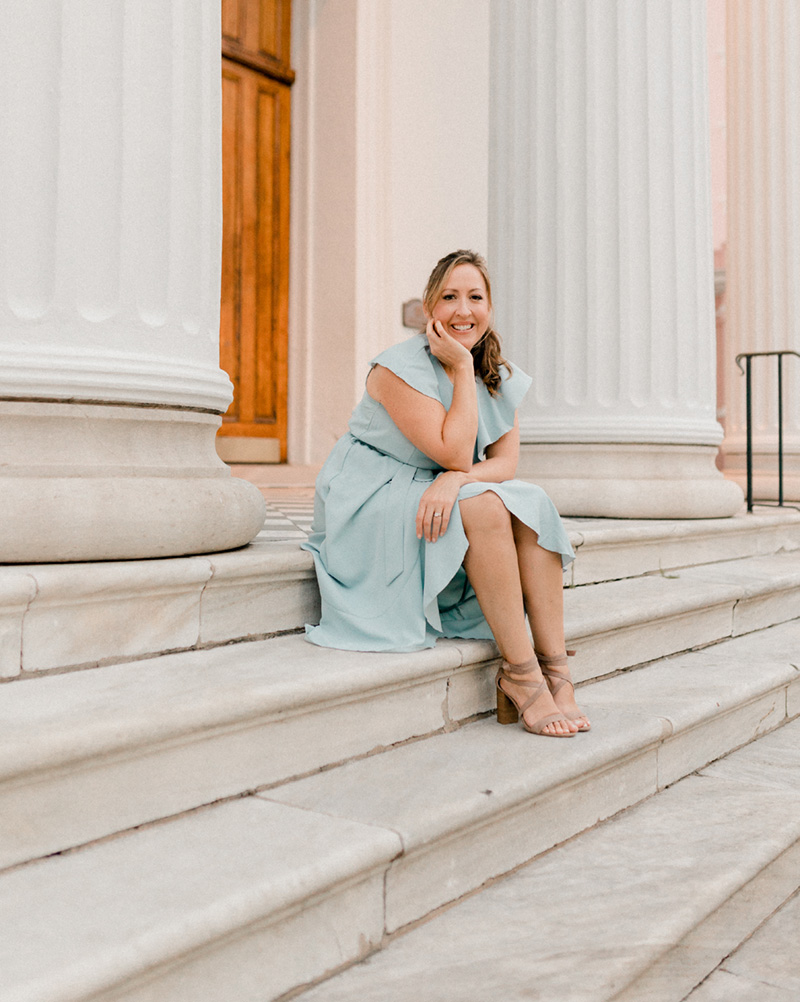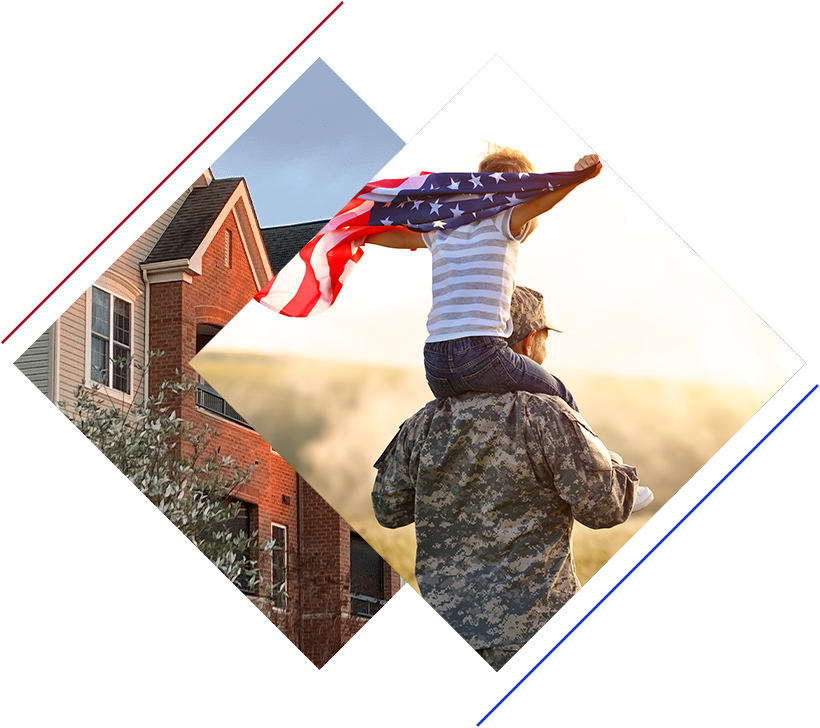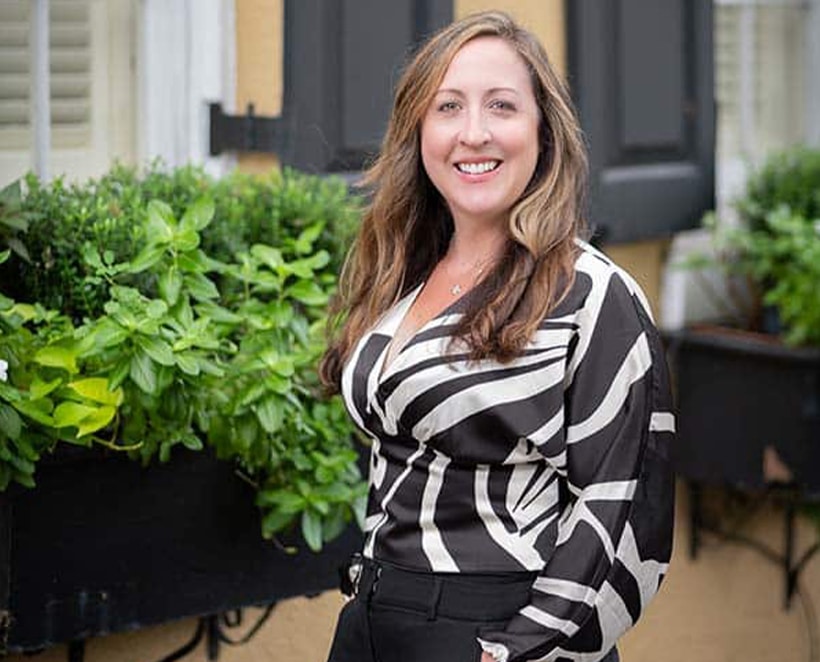
Buy a home at a reasonable rate with a VA loan in Summerville, SC
VA loans were established prior to the end of World War II and have since assisted numerous veterans, service members, and military families in fulfilling their dream of owning their a home. In recent times, the program has become increasingly significant, with VA loan volume skyrocketing and offering substantial financial advantages that enable countless veterans to purchase homes, thereby making homeownership a possibility for those who may not have qualified otherwise.
If you sacrificed comfort and security to help protect our great nation, Mission One Mortgage thanks you for your service. We believe that there's no greater honor than to serve those who have served our country. We're not afraid to go above and beyond for our veterans because that's exactly what they did for us.
What is a VA Loan in Summerville, SC?
A VA loan is a mortgage option that is backed by the government and available to Veterans, service members, and surviving spouses. It is offered by private lenders such as banks and mortgage companies and not directly by the Department of Veterans Affairs.
VA home loans come with competitive interest rates and terms and can be used to purchase a variety of properties, including:
- Single-Family Homes
- Condominiums
- Multi-Unit Properties
- Manufactured Homes
- New Construction Homes
One of the great benefits of VA loans is that eligible Veterans can buy a home with no down payment, no mortgage insurance, lenient credit requirements, and the lowest average fixed rates in the market.

This program was created by the federal government to make it easier for those who have served our country to become homeowners, and it is widely considered the strongest benefit program available for this purpose.
What are the Biggest Benefits of Having a VA Loan in Summerville, SC?
At Mission One Mortgage, we work with many Veterans who know that VA loans exist but don't quite understand the full range of benefits they provide. If that sounds familiar, keep reading. This section was written especially for you.
01
Benefit:
No Down Payment Needed
One of the standout benefits of the VA Loan program is that qualified borrowers can purchase a home without having to make a down payment up to the conforming loan limit of their county. This is a significant advantage over conventional and FHA loans, which typically require minimum down payments of 5 percent and 3.5 percent, respectively.
For example, on a $400,000 mortgage, a conventional loan would require a $20,000 down payment, while an FHA loan would require $14,000. Saving up that kind of cash can take service members and veterans years, but with the VA Loan, they can pursue homeownership without having to scrape and stockpile for years on end.
03
Benefit:
Less Strict Credit Requirements
It's important for military buyers to stay informed about credit score requirements when considering home financing options. Although credit score requirements have eased up a bit, it's still necessary to meet certain benchmarks set by conventional and FHA lenders. However, even meeting these benchmarks can be a challenge for many buyers.
Most VA lenders require a credit score of at least 620, which falls in FICO's "Fair" credit score range. Borrowers will typically need to meet a higher threshold for conventional mortgages, particularly if they want to secure a low-interest rate. It's worth checking out VA Loan rates to learn more about financing options.
Despite common misconceptions, military buyers don't need a perfect credit score to obtain financing. While a higher credit score can certainly help, it's important to remember that VA loans in Summerville, SC are designed to help military members and veterans access affordable housing.
05
Benefit:
Help with Closing Costs
Closing costs are an inevitable part of the home-buying process, no matter what type of mortgage product you choose. However, if you're a veteran, you may be pleased to know that the VA places limits on the fees and costs you're required to pay at the time of closing. Additionally, homebuyers have the option to ask sellers to cover all loan-related closing costs, as well as up to 4 percent of the purchase price for other expenses like prepaid taxes, insurance, and collections.
02
Benefit:
No Need for Private Mortgage Insurance
Coming up with a down payment can be challenging for both conventional and FHA homebuyers. In addition, they are required to pay for mortgage insurance unless they can make a sizable down payment, usually 20% of the purchase price. For instance, on a $400,000 mortgage, this would be a staggering $80,000 in cash.
FHA loans carry an upfront mortgage insurance premium and annual mortgage insurance. The latter now lasts for the life of the loan. On the other hand, conventional homebuyers will pay this monthly cost until they have built up enough equity, which can take several years.
Fortunately, VA loans do not require any mortgage insurance. However, there is a mandatory funding fee that goes directly to the Department of Veterans Affairs. Borrowers with a service-connected disability are exempt from paying this fee, which helps keep the program going for future generations.
04
Benefit:
Bankruptcy and Foreclosure
If you've experienced a financial setback such as a foreclosure, short sale, or bankruptcy, you may be worried about your chances of securing a VA home loan. However, don't lose hope just yet. With VA loans, it's still possible to be eligible for a home loan just two years after a foreclosure, short sale, or bankruptcy. In some cases, veterans who file for Chapter 13 bankruptcy protection can be eligible for a VA loan just a year after the filing date.
It's worth noting that the waiting periods for conventional or FHA financing can be significantly longer than those for VA loans. Additionally, even if you've lost a VA-backed mortgage to foreclosure, you may still be eligible for another VA loan.
So, if you're a veteran who's experienced a financial setback but still dreams of owning a home, don't give up hope. Explore your options and see if a VA loan with Mission One Mortgage could be the solution you need.
06
Benefit:
DTI Ratio Flexibility
It's important to keep in mind that VA lenders typically prefer borrowers to spend no more than 41 percent of their gross monthly income on major debts, such as mortgage payments or student loans. However, it's possible to get a VA home loan even if you have a higher DTI ratio. Some lenders may offer up to 55 percent or more depending on your credit score and ability to meet additional income requirements. This can give homebuyers more flexibility and greater purchasing power when it comes to finding their dream home.
Remember - if you have any questions about the benefits you just read about - like what credit score Mission One Mortgage requires for a VA loan - contact our office today. It would be our pleasure to help you navigate the VA loan process, one step at a time.
How to Determine Your VA Loan Eligibility
One of the most common questions we get at Mission One Mortgage revolves around VA loan eligibility. Who is actually eligible for this type of loan? What are the requirements for getting a VA loan? If you meet the following requirements, chances are you'll be eligible for a VA loan.
- If you have completed 90 days of service during wartime or 181 days of service during peacetime, you may qualify as an active-duty military member or veteran.
- If you have served in the National Guard or Reserve for a minimum of six years, or have completed 90 days of active duty under Title 32 orders, with at least 30 of them being consecutive, you may be eligible for a VA loan in Summerville, SC.
- If your spouse was a service member who passed away while on active duty or due to a service-connected disability, and you haven't remarried, you may be eligible for a VA loan. In some cases, surviving spouses who remarried after the age of 57 and after Dec. 16, 2003, may also be eligible. Spouses of prisoners of war or service members missing in action may also be eligible for VA loans, as well.
- You meet the necessary requirements for credit and income to be eligible for a VA loan. It's important to note that while the VA doesn't set a minimum credit score for VA loans, individual lenders may have their own standards. In addition to credit, your lender will also evaluate your income and debts to assess your ability to repay the mortgage.
- The property you're interested in purchasing complies with the necessary safety standards and building codes. It's also worth mentioning that in most cases, the borrower is required to make the residence their primary home within 60 days of purchase. However, there are certain circumstances in which this timeline can be extended up to 12 months.

Follow These 5 Steps to Begin the VA Home Loan Process
Curious what the general steps are for purchasing a home with a VA loan? You're not alone. Keep reading to get a feel for what you have to do to enjoy the wonderful benefits of homeownership.

When applying for a VA home loan benefit, the Certificate of Eligibility (COE) is an important document that verifies your eligibility to your lender. If you have already used your VA loan benefit in the past, a current COE can help you determine how much remaining entitlement you have. Additionally, it can ensure that your entitlement has been restored for previous VA-backed loans that were paid in full.
After you've applied for your COE, it's a good idea to examine your finances. We're talking about items such as income, expenses, credit profile, and your monthly budget. That way, you know for sure that you're ready to purchase a home.
As a veteran, you have the choice of going through a bank, credit union, or a private VA mortgage company like Mission One Mortgage. Most lenders will have different loan interest rates and fees, so it's important to shop around. Remember - Mission One specializes in VA loans in Summerville, SC. Other lenders, such as large corporations and banks, often can't match the expertise and attention to detail that Mission One provides to veterans.
During this phase, it's a good idea to meet with a range of real estate professionals. Try to choose an agent who has experience processing and overseeing VA loans. Once you select an agent, you can bring your lender's pre-approval letter to their office and begin shopping.
This is the best part of the VA loan process, other than getting the keys to your new home. When looking for a house, remember to look at homes within your price range and budget. Lean on your real estate agent, friends, and family for help in your search.
A Word of Advice from Mission One Mortgage
If you're thinking about buying a home, it's important to weigh the pros and cons of homeownership. While renting can provide flexibility and less responsibility for maintenance, it comes with the risk of rent increases, potential property sales, and uncertainty about security deposit refunds.
On the other hand, owning a home can offer relatively stable mortgage payments and an opportunity to build long-term wealth for you and your family. Before making a decision, it's crucial to determine your priorities, such as your monthly budget for mortgage payments and other expenses like transportation and childcare. Ultimately, only you can determine what's best for your housing and financial needs.
The Key to Homeownership Starts with a VA Loan in Summerville, SC
At Mission One Mortgage, we take immense pride in simplifying the mortgage process and ensuring that our clients experience minimal stress. We understand that navigating the world of mortgages can be daunting, which is why we are committed to making it as smooth as possible.
By choosing to work with us, you're not just getting a mortgage broker - you're selecting a partner who is devoted to your financial well-being and dedicated to helping you achieve your dream of homeownership. By working together, we can work through the VA loan process one step at a time.
That rings true for all of our clients, but especially the U.S. Veterans we serve. In fact, we specialize in VA mortgages and are proud to offer them to US Veterans, those on Active Duty, and their spouses. VA Loans are one of the best mortgages available, offering no down payment requirements, no PMI, and some of the most favorable rates and terms.
If you're ready to take the next big step in your life and provide stability for your family with a place to call home, contact our office today. You're closer to the dream of home ownership than you might think.
Want to know more?
Clarify your Queries Call Us Now! (843)822-5685
Latest News in Summerville, SC
The ‘Ghost’ Haunting This South Carolina Town Might Have an Earthly Explanation, Scientist Says
Sara Hashemihttps://www.smithsonianmag.com/smart-news/the-ghost-haunting-this-south-carolina-town-might-have-an-earthly-explanation-scientist-says-180985975/
In Summerville, South Carolina, a mysterious light has been seen hovering over old railroad tracks. Legend has it, it’s the glow of a lantern lighting the path of a ghost searching for her decapitated husband.Now, a seismologist has offered a scientific explanation for the floating orb: earthquakes. Susan Hough at the United States Geological Survey (USGS) published her idea in a research article late last month in ...
In Summerville, South Carolina, a mysterious light has been seen hovering over old railroad tracks. Legend has it, it’s the glow of a lantern lighting the path of a ghost searching for her decapitated husband.
Now, a seismologist has offered a scientific explanation for the floating orb: earthquakes. Susan Hough at the United States Geological Survey (USGS) published her idea in a research article late last month in Seismological Research Letters.
Hough was studying the area’s seismology, scouring old records with references to the “Summerville Light,” while trying to pinpoint the source of the destructive 1886 earthquake in Charleston. Then, she read a Halloween-themed USGS newsletter on spooky science.
“That sparked—so to speak—an idea that had been in the back of my mind, working on Charleston, that I had never really even thought too much about,” says Hough in a statement from the Seismological Society of America. “What about those ghost stories from Summerville?”
Hough suggests the town’s paranormal legends actually point to earthquakes. She noticed that many of the local “ghost sightings” coincided with periods of seismic activity.
“People said their cars would shakе violently. Well, that’s an earthquake,” Hough says to Science’s Richard Stone. “They heard noises upstairs, whispers. Or doors would swing. Seismic events we may not perceive as earthquakes fit some of these accounts. And glowing orbs that would hang in the air along a former railroad track. Well, that makes you think earthquake lights.”
Earthquake lights are mysterious phenomena that have been observed around the world, but scientists still don’t have a clear idea of what causes them. Some have proposed that seismic activity deforms minerals in the Earth, creating an electrical charge that can lead air molecules to glow. Another theory is that they’re related to the release of gases like radon or methane, which can ignite when they’re exposed to a spark of static electricity. Hough believes the railroad tracks, in particular, are the key to Summerville’s ghosts.
“Historically, when [rail companies] replaced tracks, they didn’t always haul the old track away. So, you’ve got heaps of steel out there. Sparks might be part of the story,” Hough says to Science. “And maybe the railroads are important for another reason. They may naturally follow fault lines that have carved corridors through the landscape.”
That could explain why so many ghost stories—even beyond Summerville—involve lights over railways, she adds. “When you start looking around, it turns out there’s any number of ghosts wandering around railroad tracks with lanterns looking for severed heads,” says Hough to Jonah Chester at the Post and Courier. “There’s kind of an epidemic of them.”
Recognizing this connection could help scientists find seismic zones that have gone unrecognized so far. Following similar ghost stories in other regions could point to areas with a low level of earthquake activity that had only been noticed through earthquake lights, per the statement.
Earthquakes are “an appealing explanation for these ghost stories,” says Will Levandowski, a geophysicist with the consulting company Tetra Tech who was not involved in the study, to Carolyn Wilke at the New York Times.
Email Powered by Salesforce Marketing Cloud (Privacy Notice / Terms & Conditions)
Sara Hashemi | READ MORE
Sara Hashemi is a science writer and fact-checker currently based in New York City. Her work has appeared in Sierra, The Body, Maisonneuve magazine and more.
Filed Under: American South, Chemistry, Earth Science, Earthquakes, Geology, Mysteries, New Research, Trains
Summerville neighbors push for safety gate near new Berlin G. Myers walkway
Caitlin Ashbaughhttps://www.live5news.com/2025/01/09/summerville-neighbors-push-safety-gate-near-new-berlin-g-myers-walkway/
Published: Jan. 9, 2025 at 1:45 PM PST|SUMMERVILLE, S.C. (WCSC) - A newly constructed portion of Berlin G. Myers Parkway creates concerns among some families about connectivity risks.Joseph Greco has lived in the Tea Farm neighborhood for five years and has four kids. The yards they play in are just across the street from a recent addition to the parkway: an access point for pedestrians or cyclists.“This walkway was put here to get access to the Sawmill Branch Trail. When you get to the top of it, there is no barri...
Published: Jan. 9, 2025 at 1:45 PM PST|
SUMMERVILLE, S.C. (WCSC) - A newly constructed portion of Berlin G. Myers Parkway creates concerns among some families about connectivity risks.
Joseph Greco has lived in the Tea Farm neighborhood for five years and has four kids. The yards they play in are just across the street from a recent addition to the parkway: an access point for pedestrians or cyclists.
“This walkway was put here to get access to the Sawmill Branch Trail. When you get to the top of it, there is no barrier between the sidewalk and the highway itself. There’s no type of enclosure or gate to spot people’s children or pets from walking up here and having direct access to the highway,” Greco said.
Neighbors asked for a self-closing safety gate to be placed in front of the entry spot for the ramp, similar to what you might see at a public pool or park. They also pitched the idea of placing fencing along the sidewalk to divide oncoming traffic from those using the path.
The community has attempted change for the past year, Greco speaking with the department since February of 2024.
In emails provided by Greco, the district bridge engineer described the construction zone and currently inactive highway area as a “poorly controlled access point.” The engineer also mentioned they would effort a conversation on safety protocols, and referenced the gate in question would need to be self-closing, low maintenance, rated for outdoor use and have reliable or smooth operation.
The engineer followed up in October, claiming that the department’s traffic safety staff and local bicyclist and pedestrian groups were not in favor of the gate. Several reasons were listed:
“Getting the response that the inconvenience of a cyclist is more concerning than safety in the community that’s been inconvenienced by the ramp being built here was pretty disheartening,” Greco said.
South Carolina has continuously ranked among the deadliest states for bicyclists and pedestrians since 2020. The department started a program in 2022 to help curb those numbers and create an initiative for bike and pedestrian safety.
Greco continued with saying he is not opposed to the new roadway or its new connection options. He said he does grow fearful of what results the “unprotected” route in his family-centered neighborhood could present.
“As close as I am to it every day, i see the children wandering up this, and pets getting loose and coming up here. Right now there’s small traffic from construction, but once this is an open highway, it’ll be continuous traffic up here,” Greco said.
South Carolina Department of Transporation released the following statement:
“We’re aware of the concern and working with local officials to determine a path forward. I don’t have further details to share at this point.”
SCDOT first introduced the Berlin G. Myers Parkway project in 1990 in pursuit of reducing traffic congestion, improving road safety and providing better road linkage in busier portions of Summerville. The extension of Berlin G. Myers Parkway, or Phase III, creates four lanes of new road, stretching 2.5 miles and costing an estimated $118 million.
Copyright 2025 WCSC. All rights reserved.
‘Ghost’ that haunts abandoned South Carolina rail line may be caused by tiny earthquakes
ByRichard Stonehttps://www.science.org/content/article/ghost-haunts-abandoned-south-carolina-rail-line-may-be-caused-tiny-earthquakes
Legend has it that if you walk along Old Light Road in Summerville, South Carolina, you might see an eerie glow hovering over an abandoned rail line in the nearby woods. Old-timers will tell you it’s a spectral lantern held by the apparition of a woman searching for her decapitated husband’s head. Susan Hough has proposed a scientific explanation that is far more plausible, however. A seismologist with the U.S. Geological Survey (USGS), she believes ...
Legend has it that if you walk along Old Light Road in Summerville, South Carolina, you might see an eerie glow hovering over an abandoned rail line in the nearby woods. Old-timers will tell you it’s a spectral lantern held by the apparition of a woman searching for her decapitated husband’s head. Susan Hough has proposed a scientific explanation that is far more plausible, however. A seismologist with the U.S. Geological Survey (USGS), she believes the so-called Summerville Light could represent a rare natural phenomenon: earthquake lights.
“I’m sure there are colleagues out there thinking, ‘She’s lost her mind,’” Hough says. But in the January issue of Seismological Research Letters, she recounts how her “flight of fancy” was a byproduct of more traditional fieldwork. In 2023, she and a colleague discovered a kink in the tracks of the South Carolina Railroad pointing to the fault that caused a magnitude 7.3 earthquake in Charleston in 1886. Her sleuthing for that project led to the revelation that small earthquakes in the Summerville area northwest of the city could trigger a seemingly supernatural glow.
Hough chatted with Science about her foray into ghostbusting. This interview has been edited for clarity and length.
SIGN UP FOR THE AWARD-WINNING SCIENCEADVISER NEWSLETTER
The latest news, commentary, and research, free to your inbox daily
A: When I was working in Charleston, I would go to bookstores and libraries and look for local publications, and sometimes find things with snippets of useful information. There were newspaper articles about the Summerville Light. And books like Haunted Summerville. I didn’t give it a lot of thought. Then last October, a USGS newsletter ran a little feature on spooky science. That got me thinking again about the ghost stories. And some of the details just screamed earthquake phenomena.
A: People said their cars would shakе violently. Well, that’s an earthquake. They heard noises upstairs, whispers. Or doors would swing. Seismic events we may not perceive as earthquakes fit some of these accounts. And glowing orbs that would hang in the air along a former railroad track. Well, that makes you think earthquake lights.
A: It turns out they’re all over the place. Lights have been reported in Wilmington and elsewhere in the Carolinas. Maybe those “ghosts” are illuminating shallow active faults. They’re impossible to study, because you can’t catch them in the act. But there are plausible theories that might explain them.
A: There’s a nice review paper by a Japanese scientist, Yuji Enomoto, connecting earthquake lights in some cases to the release of gases like radon or methane. Gases can ignite when they’re exposed to oxygen.
In Summerville, I think it’s the railroad tracks that matter. I’ve crawled around tracks during my fieldwork in South Carolina. Historically, when [rail companies] replaced tracks, they didn’t always haul the old track away. So, you’ve got heaps of steel out there. Sparks might be part of the story. And maybe the railroads are important for another reason. They may naturally follow fault lines that have carved corridors through the landscape. I don’t claim to have a fully mature theory to explain the lights.
A: Some of the younger ones think it’s cool. It’s making science fun.
A: I would love to do some field measurements. I’ve reached out to Steve Jaume, an excellent seismologist at the College of Charleston. I said, “Hey, do you have any students who want to go out ghostbusting?” We’ll see where it goes.
Summerville Preparatory Academy halfway through first year
Aeon Baileyhttps://www.postandcourier.com/journal-scene/education/summerville-preparatory-academy-halfway-through-first-year/article_52032f46-bf07-11ef-b913-2fd998ab2d89.html
There's a new building at 1899 Bacons Bridge Road, nestled among the trees just off the highway, with palmettos decorating the entrance. It is Summerville Preparatory Academy (SPA), the community's newest charter school, which opened its doors this year.For the 2024-2025 school year, SPA is open to students in kindergarten through sixth grade who reside in South Carolina. Over the next few years, SPA plans to add seventh and eighth grades. There are currently about 600 students enrolled, and it will have 900 students when fully built....
There's a new building at 1899 Bacons Bridge Road, nestled among the trees just off the highway, with palmettos decorating the entrance. It is Summerville Preparatory Academy (SPA), the community's newest charter school, which opened its doors this year.
For the 2024-2025 school year, SPA is open to students in kindergarten through sixth grade who reside in South Carolina. Over the next few years, SPA plans to add seventh and eighth grades. There are currently about 600 students enrolled, and it will have 900 students when fully built.
Charter schools, like public schools, receive federal and state funding through tax money on a per-student basis. This is different from private schools, which are funded through tuition. A key difference between charter and public schools is that, while all students are welcome to apply, getting in is not always guaranteed. Thus, many charters, including SPA, implement a lottery system to select who attends. Another key difference is leadership; a different board governs SPA than the schools in Dorchester School District Two (DD2). Public school districts have school boards that are publicly elected, whereas charter school boards are not.
According to a Live 5 News interview with Dorchester School District Two Superintendent Dr. Shane Robbins, SPA's opening contributed to a decrease in student enrollment in DD2 this year, which was about 700 students short of the projected number. Tax funding follows those students as they transition between schools.
South Carolina State Director for Charter Schools USA Susan Gibson said Summerville was a "really good market" for Charter Schools USA to open a new school, citing a lack of charters in the area.
"We're growing a lot in Summerville and South Carolina in general," Gibson said. "We have a lot of new growth, many people coming in, and the schools can't keep up. It's really hard to keep up with the growth of regular public schools. And so, we look for places like that that might need some support in extra schools, where people could choose whether to go to the regular public school or a charter school."
It's true — the Summerville area is growing. However, voters approved a $200 million "no tax, no millage" referendum in spring that has gone into action, updating and expanding DD2 facilities to accommodate the growing population. Still, Gibson said charters can help alleviate the growing pains of population increases faster than the school district and parents want to have a choice of where to send their children.
"It's giving them a choice," she said. "Sometimes, the public schools are bursting at the seams and they're unable to keep up with that population growth. We can do a standalone school a little faster than a district. Sometimes, parents don't want to necessarily go to their neighborhood school. They want to pick the school that their child goes to. It's a little easier with the charter school to come in and say, 'Oh, I like this part of the program, I want my kid to go to that school.' So I think they're picking them for those reasons. It just gives more opportunity and choice for a parent."
The school's education model includes learning "villages" of large groups of students who learn together across grade levels with multiple teachers. There are also breakout rooms for different activities and small group learning time. Additionally, there is a focus on individual development, with each student receiving a "personalized learning plan," or PLP.
"One of the biggest things that we do a little bit differently than a regular public school is we have personalized learning plans. I know they're beginning here, so I will say that sometimes when you open a school, they don't start as fast as they should, so you'll see it. If a parent is reading this, I want them to know that we've been working on them," Gibson said. "If a student needs more support in an area, then one teacher can pull a small group to one of the other rooms, or vice versa, or for the fact that if a kid is achieving more, we're able to push them further in that same type of model. So it gives them a little more individualized learning and looking at where the child's at, rather than their age or specific grade."
In addition to PLPs still being prepared, there have been other obstacles. The original principal, Tony Wilson, recently resigned. His replacement is Jean Castelli. Gibson said it's all part of the process when opening a new school.
"Anytime you're opening a new school, there's bumps in the road," she said. "I personally opened a new school as a principal. I opened two, and they were both very successful, but everybody was new to the building that first week. Every child is new to the building, and it isn't easy. We had really supportive parents, though. They were so understanding and excited about the new school and gave a lot of grace for those first couple of weeks, which was great. I think being honest with them in those informational meetings that a new school is difficult made all the difference in the world."
Gibson also noted "almost 100%" of the school's teachers are certified, with the rest finishing their certification courses.
When looking to the future, Gibson said the school aims to build traditions and community.
"I think some of the goals are just to continue to build and grow from what we have, start to develop those traditions as a school so that you go to Summerville Prep because they do this type of a community feel, I think becomes important," she said. "What will be something that we're going to do every year? They went caroling yesterday, for the first time, at the first kind of concert. Is that going to be something that's going to be our tradition, or is it going to be something in the spring, 'We do this as Summerville Prep'? Creating those traditions and longstanding types of things is what makes a school part of the community. I think more to come on that because each school takes on its own kind of personality, which is exciting."
Disclaimer:







 (843)822-5685
(843)822-5685